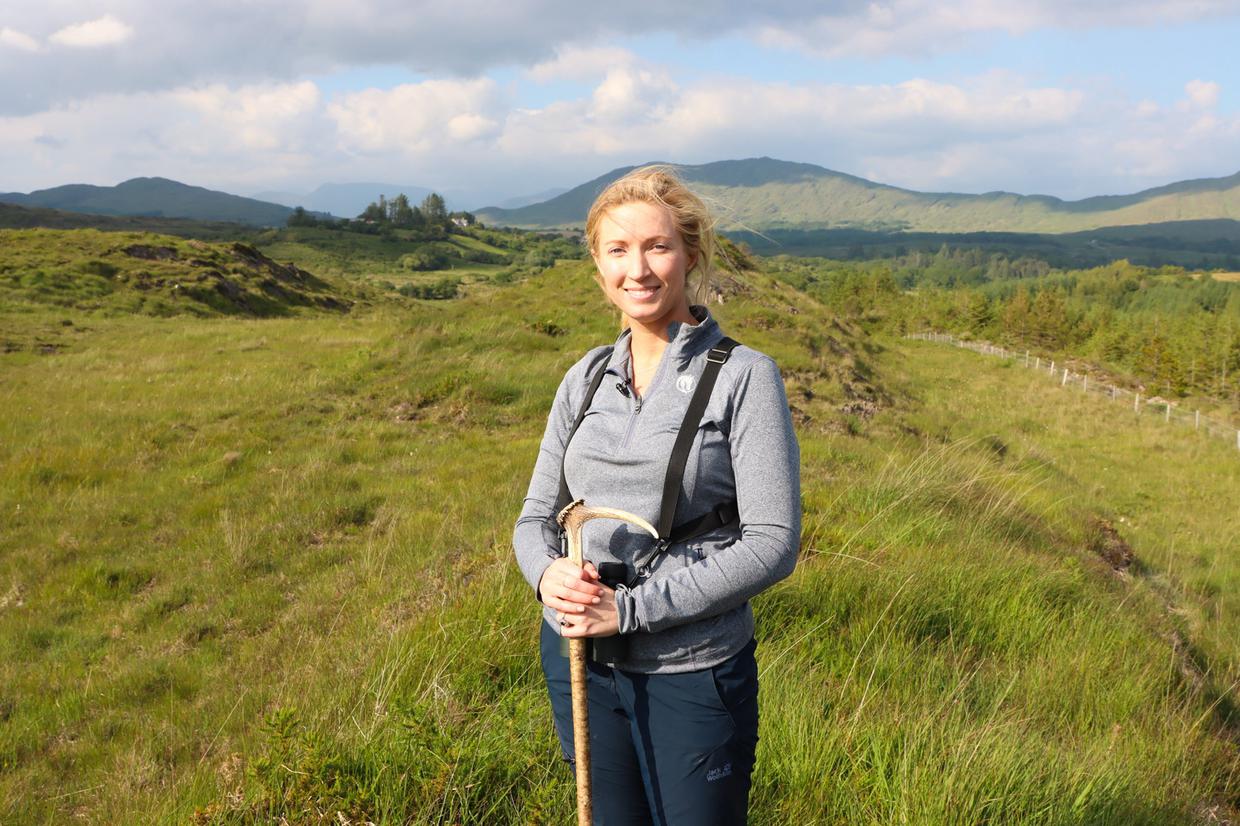As we settle into the interview, Amanda Geard’s Australian accent is transfixing. I had just finished her new book, The Midnight House, the night before. The novel follows a thirty-something journalist called Ellie who finds herself wandering around Kerry, having recently moved down from Dublin following a professional and romantic scandal. Back in her hometown and living with her mother, Ellie’s days of exile are first spent loafing about the fictional Kerry town of Ballinn trying to avoid older relations while still trying to get her caffeine fix.
Geard, though she’s found herself in Kerry in recent years, worked as an explorational geologist, a career which led to her writing. In conversation with The University Times, Geard explains, “I’d be working out in jungles and deserts, so there’d be long nights, lots of reading,” which led to her thinking “how do people write things out?” From there, she began writing The Midnight House.
This sense of wonder and discovery from explorational geology permeates her writing, as a mysterious letter from 1940 finds its way into Ellie’s life, written by the late Charlotte Rathemore of the locally eminent Rathmore estate. As Ellie learns more about the family, she becomes determined to unravel the mysterious circumstances surrounding Charlotte’s untimely disappearance.
Geard was prepared for the publishing process; armed with The Writers’ and Artists’ Yearbook, she notes, “I went through, looking at agents for this genre and I’d already written them down thinking I’d send this to those agents.” Knowing the agents before she started writing was a great help, as Geard states, “that was a really good incentive… it was nice to know that was the next step.”
Nonetheless, Geard says the process was painstaking, especially waiting for responses. She continues, “when you send it out, just maybe go hiking and take no email, because you’re just waiting and waiting.” She recalls the process she experienced, explaining “mine went out to 12 publishers and there was just silence… for months. Eventually three publishers were interested, but its hard on the mind.”
As a relative newcomer to Kerry with fresh eyes, Geard succeeded in transposing the setting onto the page. Her descriptions of the Kerry landscape are extremely evocative and, as she notes, “I found it really easy to put a lot of Kerry” into the book. “You just get this sense, when all the tourists disappear, that you step back a bit in time,” a sense that the novel illustrates extremely well, especially given its structural format.
The book alternates between three perspectives and time periods for each character, and Geard explains,“I like that kind of book where they all have their own timelines, they all have their own mysteries”. Ellie, in 2019, Charlotte and her sister-in-law Nancy Rathmore near the turn of the 1940s, and Nancy’s children in the late 1950s. Because of these disparate timelines, Geard decided to include a family tree in the front matter, and notes her reasoning that “it’s nice to be able to trace your history all the way back”, a theme certainly prevalent throughout The Midnight House as you’re thrust into the past. This focus on the past was informed by Geard’s own life: when she first moved to Kerry her family moved into a house built in 1823, not “massively ostentatious, but a landowner’s house,” in some ways like the Rathmore estate itself.
Charlotte’s timeline specifically includes many elements of Irish tradition, which was partially informed by Geard’s own experience around Kerry. Charlotte’s encounters with the seanchaí, traditional Irish storytellers, are partially drawn from the Sneem Storytelling Festival, an event that “gives a real flavour” of the local culture, as Geard notes. At the same time the treatment of the seanchaí is influenced by her neighbours who tell “local ghost stories, stories about the banshee” and such, stories which shine through in Charlotte’s sections of the book.
Amanda Geard’s The Midnight House depicts three contrasting versions of Ireland, and it does so in a way that doesn’t skimp on realism or detail. In each section she presents starkly different realities undergoing rapid change. Geard is able to tie together these three disparate times with a mystery that keeps the reader involved – if not already swayed by the imagery and dialogue.
The mystery of Charlotte’s death and the Rathmore family’s involvement lies at the centre of The Midnight House, but by the end of the book, not only is a mystery solved, but a more full understanding of the past’s relation to the present and the often cyclical repetitions of generations is gleaned. The Midnight House is a fantastic read for anyone with a penchant for mystery, or looking to envision a more vivid picture of the Ireland of the past. Looking forward toward the future Geard hints that “hopefully book two will be out in 2023,” which will be another separate timeline thriller – not a sequel – set between Geard’s home of Tasmania, Kerry, and London.







